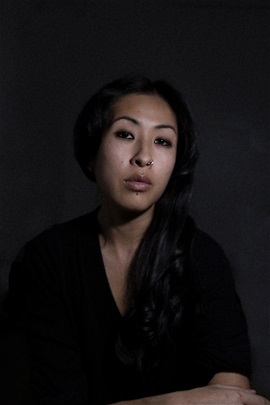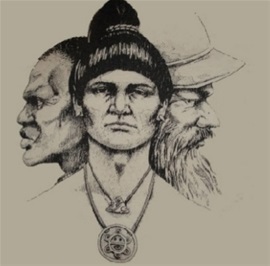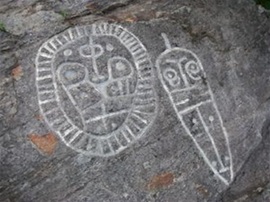 |
 |
|
 |
 |
Return From Extinction – Surviving Paper Genocide
 Documentary Photographer
HARUKA SAKAGUCHI
Documentary Photographer
HARUKA SAKAGUCHI
Higuayagua Taino of the Caribbeani s fully dedicated to extensive research and dissemination of Taino culture. The group is composed of pan-Caribbean individuals dedicated
to the survival, revival and reasertions of the Taino culture and identity. We hold workshops all year-round which include dance, language, spirituality, etc. 2019
was a particularly productive year. We hope the trend continues into 2020 and beyond as we have many projects planned for the very near future One such project is both an
artistic and educational exhibit. Although modest in size it nevertheless makes a powerful statement as it reveals the heart of what is popularly known as the "Taino Movement". It
involves a series of photographic portraits along with participant statements regarding their identities which help explain the mindset of some of those involved in Taino reclamation movement. The
exhibit was conceptualized during a conversation at an Higuayagua workshop. Documentary Photographer Haruka Sakaguchi, asked group members a series of questions which are commonly asked of people who identify with thier Indigenous roots or are
members of the emerging Taino Community:
Question: Who were the Taino Indians?
Answer : According to archaeologists
between 6-8 thousand years ago the first migrations into the Caribbean island region. Some of the early migrations may have come from the Yucatan. At that time period Sea levels were lower, separating the peninsula from westernmost Cuba by only 60 miles.
These early migrants are said to be pre-ceramic and pre-agricultural. Only spear heads have been found. No one knows who these peoples were or which language groups they belonged to is not known. Some four thousand years ago Indigenous Arawak explorers from the Amazon/Orinoco river
basins began moving up the chain of islands, arriving in several waves. By the time the Europeans arrived in 1492 the Taino Arawak language was dominant in all the islands. Linguists say it was the “lingua franca” of the Greater Antilles.
Taino society was composed, in
a sense, very much like New York City, the borough of Manhattan to be exact. This borough for example is about 22 miles long and about 5 miles wide. Everyone in Manhattan is an American, although many would refer to themselves as Manhattanites. The
common language of the population is of course English. Yet, within this demographic are multiple ethnicities such as Chinese, Japanese, Korean, African Americans, Jews, Arabic, Latino, Russian, Irish, Italian, German, Polish, Hindu, Pakistani, etc etc. All
American, all communicating with each other, all the same, yet different. Taino Indians were also multi-ethnic. What we call Taino is the common culture of many different groups who at the time of contact were composed of Chiefdoms, all worshiping Cemis (Taino
spiritual Objects). That said, the Taino were mostly all descended from Arawakan peoples. So that genetically and culturally they were very similar to begin with, albeit with regional differences within islands and from island to island.
Question: What makes you a Taino or Indian?
Answer : We are native to the Caribbean islands, our ancestral homelands. Our history
on the islands is many thousands of years old. It did not begin with Spanish arrival, conquest, and subsequent colonization. Some may argue that we are racially mixed. This is true. In fact, most humans on the planet in this day and age have some degree
of admixture. The human race itself is a mixture of several hominid lines. We are a mixture of Cro-magnon man, Neanderthal, Denisovan, Foresiensis,
in fact, every year geneticists discover more and more about our species as they delve deeper and deeper into our genome. So, if we are not a pure species, then what on earth is a pure race?? Nothing. It is a fact, Race is a human construct.
Modern Taino identity goes beyond race, color, or creed. Geneticists have long documented the fact that most
Caribbean people carry substantial Native ancestry along with African and European blood lines. Our Taino identities, however, did not start in a test tube. As admixed peoples, we began identifying with our Indigenous ancestors through culture, spirituality and insitu identities (Identifying with native land). Notions of racial purity
should have been dead and buried after the Eugenic movement of the Nazis. Our ancestors
left not only DNA but also passed on Intangible memory, customs, culture, spirituality & language. Caribbean identity boils down to this 1) You believe your are Indian with African and Spanish ancestry 2) or you African and Spanish with some Taino ancestry. One of these two connects you to our lands across many thousands of years, while the other states we began with Spanish colonization. When we gaze upon the natural beauty of our Caribbean landscapes it does our hearts good to know that our mothers before us, and their mothers before them, and their mothers before them, all gazed upon those beautiful islands. We know that we have been
connected to those islands for thousands of years and always will be. That is the heart of our Indigeneity
Question: Why Indians, why not embrace your Hispanic or African identities as well?
 Photo by
Chino Taino
Photo by
Chino Taino
Answer : The notion that our Taino
identity erases our African or Spanish ancestry is false. No modern day self or group Identiffied Taino negates his Iberian or African heritage. Taino ancestors were not a single ethnic group but rather composites of seemingly culturally homogenous,
multi-ethnic peoples, held together by a common vision. Africans and Spaniards who migrated to the Caribbean whether by force or by unquenchable ambition, mixed with the native peoples, producing the first tri-partite, tri-racial people of the Americas. Had
these “racial” mixtures occurred in Europe or Africa, we would be European or African, but these mixtures occurred however on Indigenous land, American soil. Thus, we are native to the Americas. While many choose to believe that conquest and colonization was inevitable and its consequences irreversible, we wholeheartedly disagree with that assumption. We
assert that we have the right to self-determination. We acknowledge all of our
ancestries, Butwe are Taino first
Questioon-Why are some of you wearing headdresses for the portraits?
Answer : Before European arrival native attire with beautiful geometric patterns or the use of feathers, beads, etc were used
to symbolize social status, rank, beauty and collective pride. These were stripped from our peoples. Our ancestors were forbidden to wear them and in time, we were made to feel ashamed for “wearing that bird on your head” while simultaneously “others”
wore them at Halloween or at ball games supposedly “honoring our bravery or other romantic notions. In our quest to retake our identities, we hav not only returned to the headdress and its uses as mentioned above,
but also as symbols of Native resistance.
With a stroke of their pens they made us disappear
No one definitively knows just how many Taino Indians lived when the Europeans first arrived in the Caribbean. The Taino did not keep a tally of their populations as far as we
know today. Census records as we know them today arrived with the Spaniards. The Taino living on the outside of Spanish periphery could not be counted, there were only “guestimates”. The limitations the Spaniards faced included the following: 1) The Spanish could only count the Indians under their control.
2) It was improbable if not impossible to count the Indians who had run off into the mountains. Spanish accounts of the time period
mention many such scenarios. 3) The island of Puerto Rico for example has a chain of mountains that were simply treacherous
to traverse in those days, except for the Indians. 4) The highest peak east of the Mississippi lies in the central mountains
of the Dominican Republic. The Dominican Republic and Haiti have mountain ranges bigger than the island of Puerto Rico. 5) Jamaica’s
famous Blue Mountains are said not to have been inhabited by Taino people prior to European arrival. It is certain that many Yamaye Taino people ran into those mountains seeking refuge as well. 6
In this modern age of computers, we cannot get an accurate count of people who do not want to get counted, such as illegal migrants. How many illegal Haitians are there in the DR? How many illegal
Dominicans are there in Puerto Rico? etc etc. 7) Could many of these census records been biased? Perhaps purposely undercounting
Indians. That is what modern Taino descendants claim. 8) If there were many native maroons living in the mountains of the
Caribbean, you could expect genotypes and phenotypes to be present in modern Caribbean peoples along with many aspects of culture and customs……….and in fact there are! The Spanish Friar Bartolome de las Casas stated that when he arrived on Hispaniola
(Dominican Republic/Haiti) there were only 60,000 left down from 3 million in 1494. However, the conservative number is closer to 500,000. What is known for sure is that the Dominican Republic and Haiti had the highest population. Jamaica and Puerto Rico had
somewhere between 60 -80,000. 1508 Spanish Census in Dominican Republic - 60,000 1529 Spanish Census in Puerto Rico - 1, 148 1777 Spanish Census in Puerto Rico- 1, 756 1777
Census of the Dominican Republic – 100,000 Mestizo (Half Indian/half Black) 60,000 Zambo (half Indian/half Black). 1783- Medric de St Mery reported That villages from Boya to Banique
(Banica) identified themselves as descendants of Enriquillo. 1787 Spanish Census in Puerto Rico- 2, 303 1787
Census in the Dominican Republic declares there asre no more full blooed Indians in Boya- This town is one of 4 founded by the great cacike Enriquillo.. 1799
Spanish Census in Puerto Rico- 2, 300 1800 Spanish Census in Puerto Rico NONE American Historian Dr. Lynne
Guitar’s wonderful dissertation Cultural Genesis: Relationships between Indians, Africans and Spaniards in Rural Hispaniola in the first half sixteenth century” best explains how and why the myth of Taino extinction arose.
Census records were often manipulated by the Spaniards. For example, after 1534 colonists were forbidden from Taino Indians as slaves or as indentured servants. But that did not stop the practice. These were simply re-classified as African. After all, itv
wasn’t as if there were people placed in positions to protect Indians. Mixed blood people were often either left out census or placed in categories they themselves may not have identified with. Forty Percent of the recognized wives
of the Spaniards were Indian women. The term “Mestizo” meaning mixed with Indian, was not coined until 1586, nearly 100 years of racial mixture. These mixed bloods also escaped into the mountains, joining maroon communities. It is no wonder how
the seeds of nativist identities were planted in the Caribbean.
A new story emerges from our very own pens

All humans have the fundamental right to self-determination. This is a fact. Thus, many modern Caribbean people, particularly those living in the diaspora found it increasingly
difficult to continue letting others decide for us how we should identify. For example, anyone living in the United States during the late 1960’s can remember how Spanish speakers
from Latin America (LATINO) suddenly became HISPANICS in 1970. Before this only Cuban, Puerto Rican, Mexican or OTHER were categories designated for people from Latin America. Alongside
this new “Hispanic” category was the often combined as White Hispanic or non-White Hispanic (implying Black ancestry) Indo Hispanic or Native Hispanic have never been options.
The Native American/American Indian category is now an option whereas only North American Indians or Alaska Native were allowed to use these categories. Today in American census one can identify by
ethnic, racial and nationality. However, modern self-identified Tainos began inserting TAINO ink place of Hispanic or Latino. This custom began in the late 1980’s with the efforts of United Confederation of Taino peoples (UCTP) and has since spread
throughout the Caribbean and diaspora. We are writing ourselves back into the census records and history.
|
|
 |
|
|
|